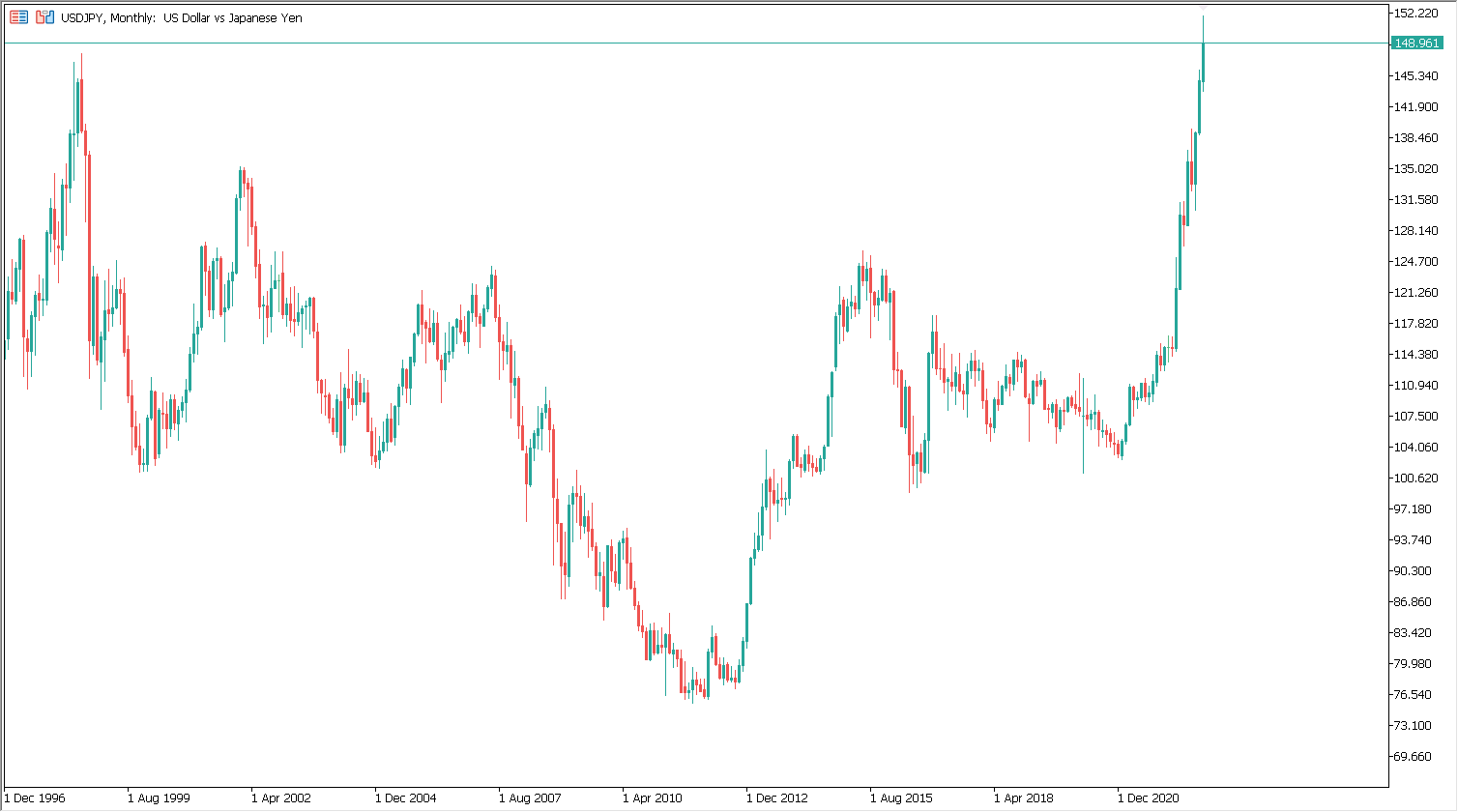On Friday, September 21, during the late afternoon hours in Europe and, in turn, the evening hours in Japan, there was a sharp plunge in the USD/JPY exchange rate. Quotations plunged from around 151.50 to 146 yen per dollar. The market was expected to see another intervention by Japanese authorities after the yen had previously weakened to levels last seen 32 years ago.
Is the yen sinking in strength?
Japanese Finance Minister Shunichi Suzuki said Monday that the government is trying to confront currency speculators as the yen continues to fluctuate widely. The systematic weakening of the currency prompted another Bank of Japan intervention on Friday. Suzuki assured that the ministry is monitoring the currency market, BBN reported. In turn, Japanese Deputy Finance Minister for International Affairs Masato Kanda added that the government "will continue to take appropriate measures against excessive disorderly movements in the market."
 Source: Conotoxia MT5, USD/JPY, H1
Source: Conotoxia MT5, USD/JPY, H1
Statements by Japanese authorities
Masato Kanda also told reporters that Japan cannot tolerate speculators who significantly alter currency rates and have a negative impact on people's lives and the global economy. Meanwhile, Japanese Prime Minister Fumio Kishida issued a new warning on Saturday against excessive yen movements in the currency market, saying the country will not hesitate to take "appropriate" measures when necessary. In turn, Bank of Japan Governor Haruhiko Kuroda said the central bank must support Japan's economic recovery from the pandemic. The BOJ would do everything to achieve stable inflation supported by wage growth. The rapid weakening of the yen is becoming a factor in lifting inflation, according to quotes published by Bloomberg.
Will the Bank of Japan fight the Fed?
It appears that the main factor that may be behind the yen's weakening in recent months is the divergence in the monetary policy pursued by the Fed and the Bank of Japan. The Fed has opted for an unprecedented pace of interest rate hikes, while the Bank of Japan persists with loose monetary policy. As a result, the U.S. dollar is increasing its interest rate in favor of the Japanese yen, and capital seems to be flowing to where it can get more interest.

Source: Conotoxia MT5, USD / JPY, MN.
Nonetheless, current Japanese actions seem to indicate that the finance ministry would try to chase away those who gamble on further JPY weakness. If this is indeed the case, it seems that Japan believes the Fed is indeed close to moving away from the pace of 75 bp hikes every meeting. With the BOJ poised to maintain ultra-low policy at this week's meeting, the only hope for lasting relief for the yen should come from the other side of the Pacific. If that doesn't happen, however, it seems that the only result Japan might achieve, would be a decline in foreign exchange reserves.
Did you know that CFDs allow you to trade on both falling and rising prices?
Derivatives allow you to open buy and sell positions, and thus invest when quotes rise as well as fall. At Conotoxia, you can choose from CFDs on more than 100 currency pairs. Wanting to find a CFD on USD/JPY, for example, you just need to follow 4 simple steps:
- To access Trading Universe - a state-of-the-art hub of financial, information, investment and social products and services through a single Smart account, register here.
- Click "Platforms" in the "Invest&Forex" section.
- Choose one of the accounts: demo or live
- On the MT5 or cTrader platform, search for the CFD currency pair you are looking for and drag it to the chart window. Use the one-click trading option or open a new order with the right mouse button.
Daniel Kostecki, Director of the Polish branch of Conotoxia Ltd. (Conotoxia investment service)
Read more reviews and open a demo account at invest.conotoxia.com
Materials, analysis and opinions contained, referenced or provided herein are intended solely for informational and educational purposes. Personal opinion of the author does not represent and should not be constructed as a statement or an investment advice made by Conotoxia Ltd. All indiscriminate reliance on illustrative or informational materials may lead to losses. Past performance is not a reliable indicator of future results.
CFDs are complex instruments and come with a high risk of losing money rapidly due to leverage. 75.21% of retail investor accounts lose money when trading CFDs with this CFD provider. Consider whether you understand how CFDs work and whether you can afford the high risk of losing your money.



